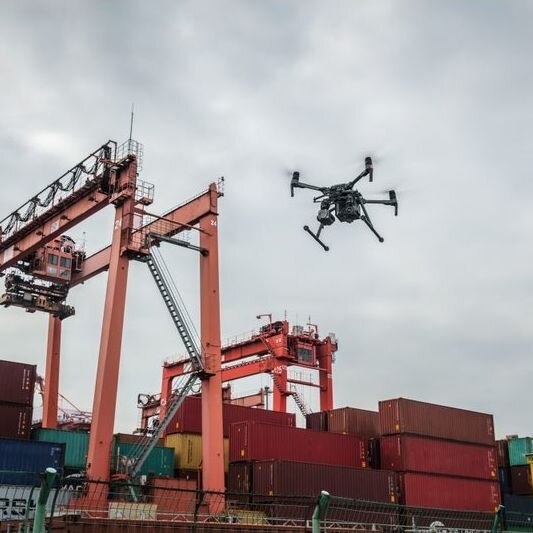
Research & Industry
The advantages of drones in research and industry are particularly evident in large systems that require the use of climbers or lifting platforms, such as on chimneys, pipelines, masts or large machines. They can also cover large distances in a short time.
Industrial plants
In order to inspect tall industrial chimneys, which can easily reach heights of over 250 metres, mobile equipment often has to be used. The high costs associated with this can be quickly reduced by using a drone. Drones are able to scan the entire chimney within a few hours. The images generated allow the first signs of breakouts, cracks or similar faults to be recognised from the ground without sending a team to a dangerous height.
For the high safety requirements of industrial plants, it is advisable to use a pilot with extensive knowledge. Crashes of the multicopter can cause fatal damage to the system, which is why sufficient safety precautions such as precise flight planning, checking the equipment and wearing protective clothing should be taken. Our application training for trade and industry provides a solid foundation for the use of a multicopter in your company.
Large equipment/large machines
Due to the enormous size of certain machines and structures, their inspection is often challenging and harbours quite a few risks for man and machine. By using a drone, for example, these systems do not necessarily have to be switched off and their efficiency can therefore be increased and costs reduced.
The drone makes it possible to scan the entire system so that the resulting images can then be analysed to assess damage and plan a renovation. Individual elements can even be flown over again and photographed in more detail. The use of a drone quickly pays off, especially for systems with large areas, as it considerably speeds up and facilitates the meticulous assessment. With the right object resolution, you can recognise hairline cracks in the surfaces and counteract major damage at an early stage.